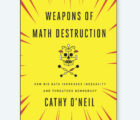 Flatland, a two-dimensional Euclidean world, has set up three fixed GPS broadcast stations. The stations, A, B and C, are located on the vertices of an equilateral triangle with edges of length 100 kilometers. When Richard leaves his house in Flatland to visit Roger, his GPS receiver gets a time signal of exactly 7 a.m. from C, but the time from B is 0.00001 seconds earlier, and the time from A is 0.00004 seconds earlier. When Richard arrives at Roger’s house, the time he receives from B is 0.00001 seconds later than the time he receives from C, and the time from A is 0.00004 seconds later than the time from C. How far is Richard’s house from Roger’s house?
Flatland, a two-dimensional Euclidean world, has set up three fixed GPS broadcast stations. The stations, A, B and C, are located on the vertices of an equilateral triangle with edges of length 100 kilometers. When Richard leaves his house in Flatland to visit Roger, his GPS receiver gets a time signal of exactly 7 a.m. from C, but the time from B is 0.00001 seconds earlier, and the time from A is 0.00004 seconds earlier. When Richard arrives at Roger’s house, the time he receives from B is 0.00001 seconds later than the time he receives from C, and the time from A is 0.00004 seconds later than the time from C. How far is Richard’s house from Roger’s house?
 Betting on Squares and Cubes
Betting on Squares and Cubes
In this puzzle, 10,000 integers were selected randomly from the set 1 to 10^(10^(10^(10^(10^10)))). For each integer that was divisible by a square (>1) but not by a cube (>1), Bernhard would pay 3.9 thaler, and receive 1 thaler for every other integer. The first question was, “Would Bernhard choose to reverse the payments?” The second question was, “Under his preferred rules, what is the probability that Bernhard would lose money?”
First, note an integer is divisible by a square or by a cube if and only if it is divisible by a prime squared or by a prime cubed, respectively. If p is a prime, then 1/(p2) is the (asymptotic) fraction of integers divisible by p2. It can be shown that if p1, …, pk are distinct primes, the fraction of integers not divisible by the square of any of them is the product (1 – 1/(p12)) … (1 – 1/(pk2)). This product, taken as a limit over all primes (chosen in ascending order p1, p2, …, pk, …), is the fraction of integers not divisible by any square. It converges pretty quickly and is equal to 1/z(2), where z(z) is the Riemann zeta function. Similarly, the fraction of integers not divisible by a cube is (1 – 1/(p13)) … (1 – 1/(pk3)) = 1/z(3). The fraction of numbers divisible by a square but not a cube is therefore 1/z(3) – 1/z(2). Either calculating the products to a high pk or using numerical estimations of z(z), produces 1/z(3) – 1/z(2) = 0.22398…
So, under the original rules, Bernhard’s expected gain per random integer is (0.77602) – (3.9)(0.22398) = -0.0975 thalers. Obviously, he would prefer to reverse the payments. Under reversed payments, according to the binomial distribution, his total expected gain would be 975 thalers with a standard deviation of ((10000)(4.9)2(0.77602)(0.22398))1/2 = 204.3. Direct calculation from the binomial distribution gives a little better than a 1 in 1.5 million chance of an overall loss. An overall loss would correspond to just over 4.77 standard deviations below the mean. Using a normal approximation, there would be a little less than a 1 in a million chance of an overall loss.
Solutions were submitted by Bob Conger, Jason Israel and Brad Rosin.
AR Puzzle Editor Jon Evans is president of Convergent Actuarial Services, Inc. in Delray Beach, Florida.













